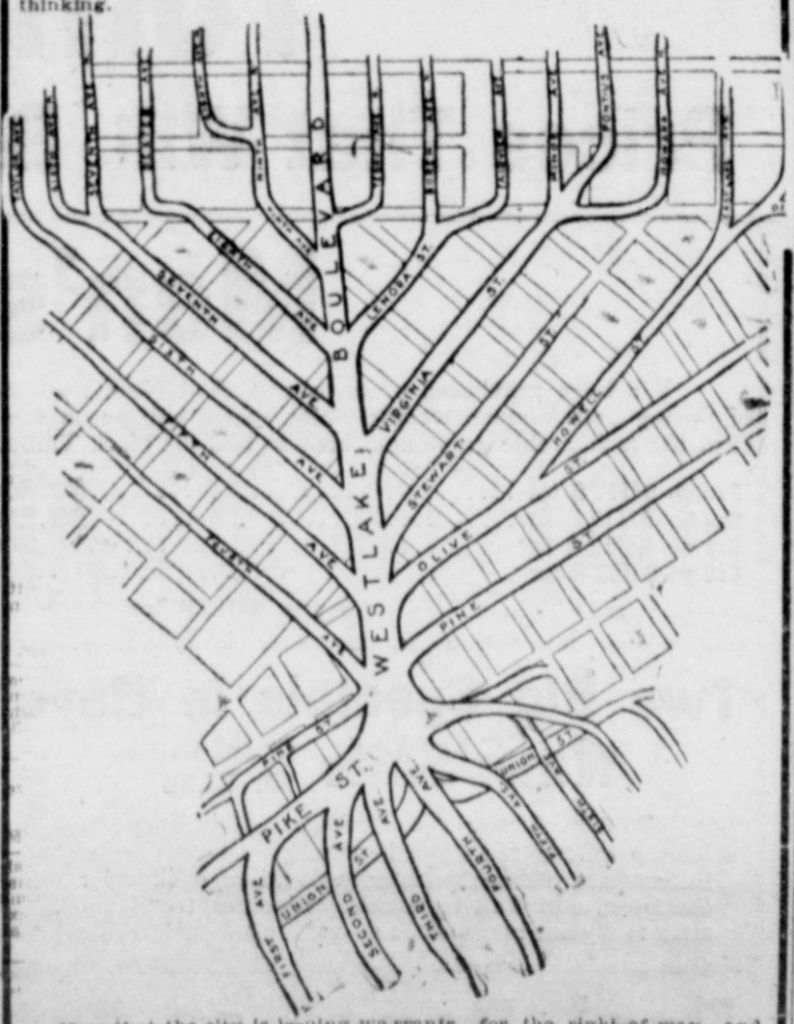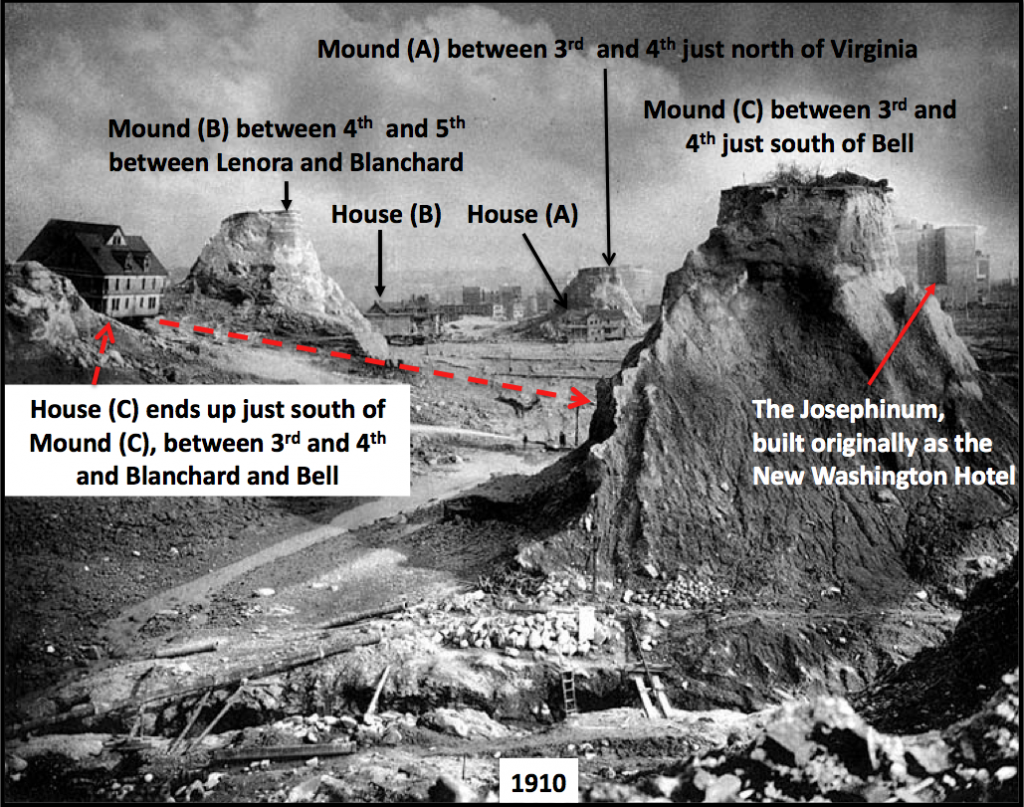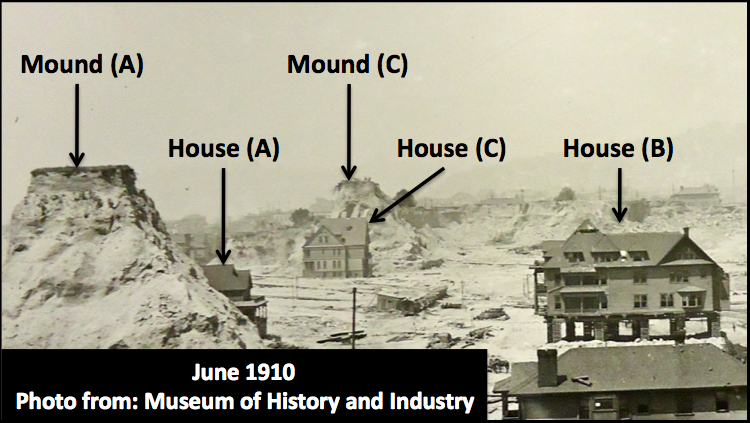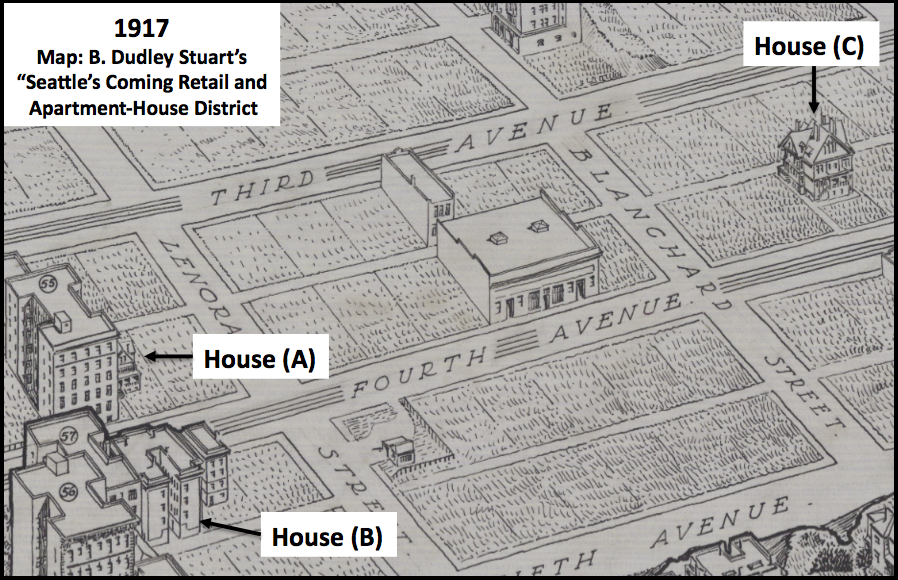Many of us probably drive Westlake Avenue in Seattle without considering how odd it is. The street cuts diagonally across the normal, rectangular street grid. Few other streets do this. The diagonal originally started at Denny Way and ended at Fourth Avenue and Pike Street, which is why Westlake Mall is also not a rectangular space. Westlake north of Denny, or Rollin Avenue as it was originally known, had long extended north to Lake Union and continued on a trestle system around the lake to Fremont.
Planning for Westlake Boulevard started in 1901. Early articles noted that it would be expensive, primarily because of condemnation; run through several houses; and be a bureaucratic mess. Early plans called for dirt from the Second Avenue Regrade on Denny Hill to be used in areas that needed to be filled but it is not clear how much dirt was used. Work began in March 1905.
“When work starts on the south and all the buildings within the right-of-way from Pike Street north will be razed at the same time. There are several, which private persons have purchased, yet to be moved away, but many of the smaller structures will be town down and piled in a heap to be burned,” wrote an unnamed Seattle Times reporter on March 28, 1905. The contractor expected to have Westlake opened by the end of the year.
This 1904 map and accompanying text are from an advertisement in 1904. It gives a flavor of what the road’s proponents hoped would happen. In addition to increased property values they also hoped it would open up transportation routes to the north, which it did. For many years, at least one trolley traveled up Westlake.

Material for for this story comes out of research I have done for my new book on Seattle – Too High and Too Steep: Reshaping Seattle’s Topography.
If you so desire, you can like my geologywriter Facebook page.



